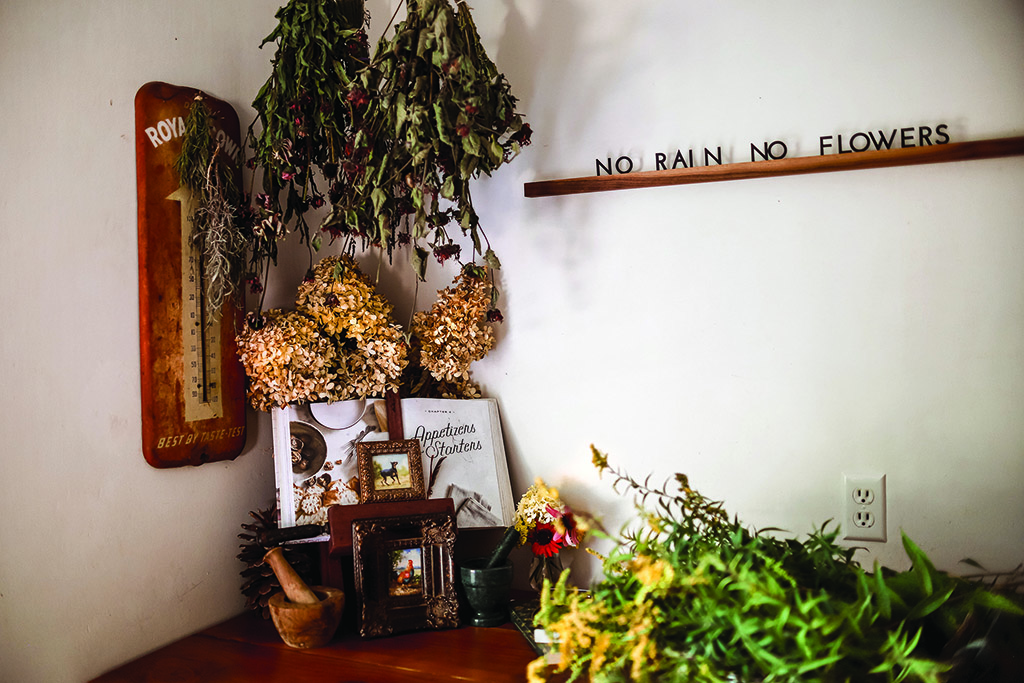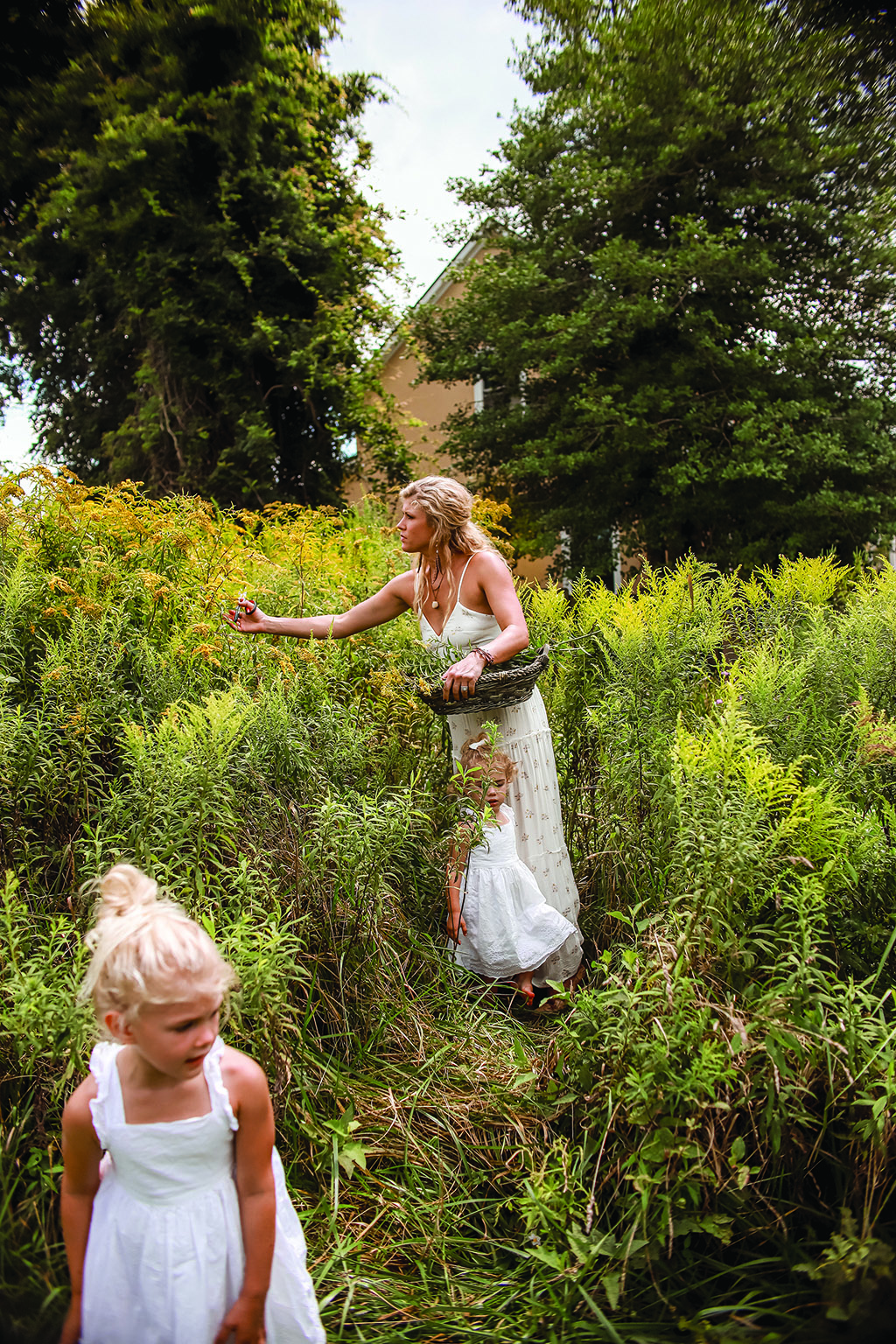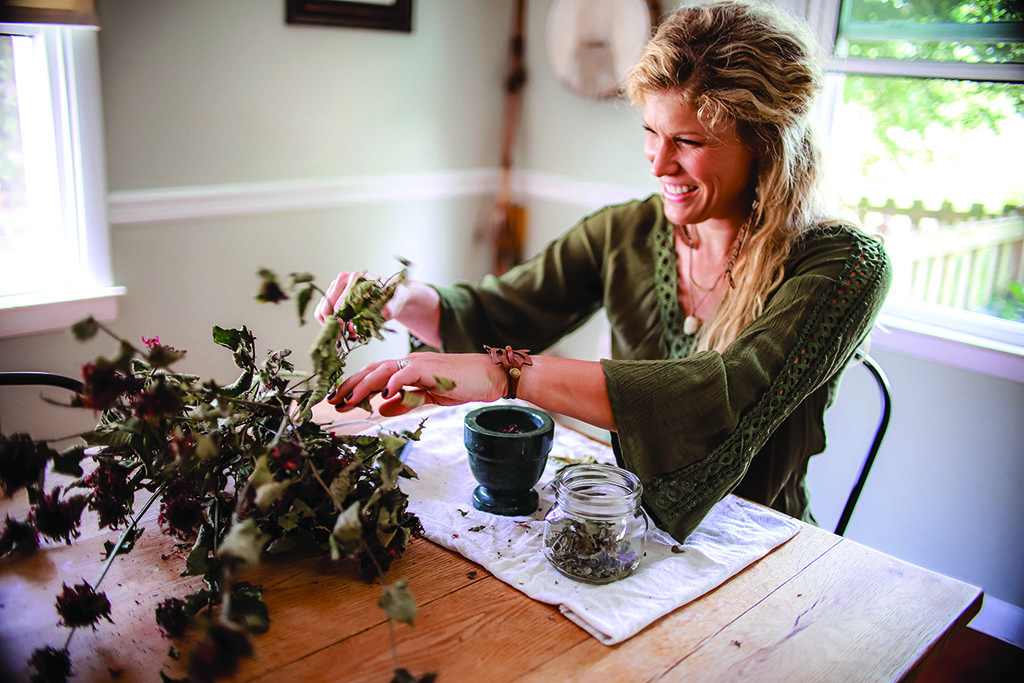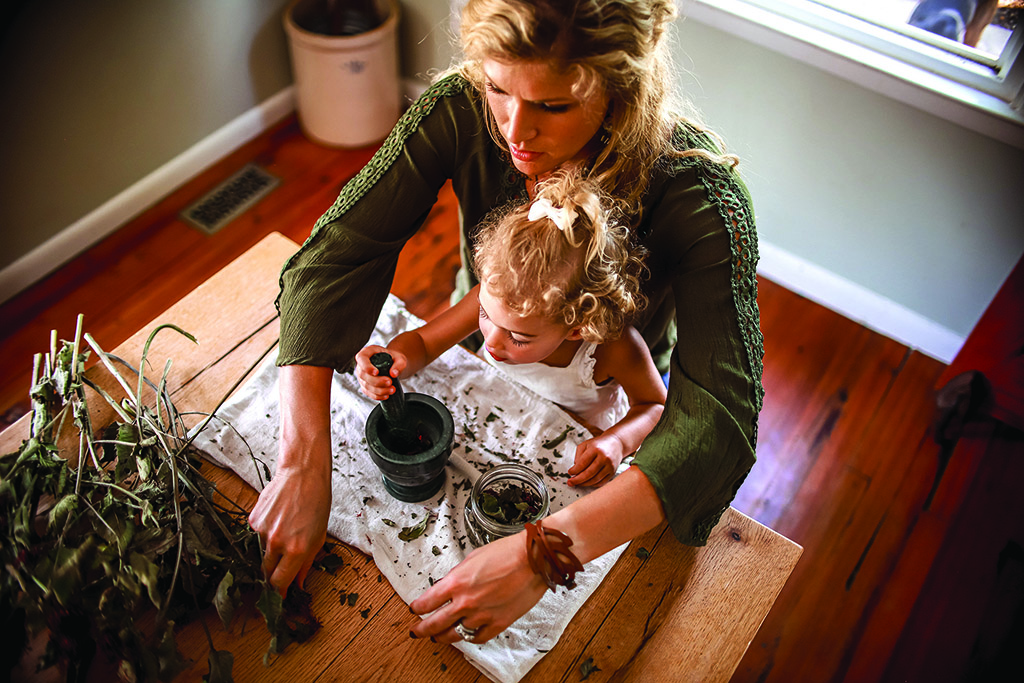The Lost Art of Foraging: Healing with Medicinal Plants

Written by Chelsea Moore | Photos by Jennifer Gray
I had always thought it was a weed. It’s usually mowed down, plucked from the ground, and tossed away. But this spring, I realized purple dead nettle, proliferating in fields, backyards, and on roadsides, was an herb with medicinal properties. As part of the mint family, it grows during the spring’s peak allergy season.
It can be made into loose leaf teas, vodka tinctures, and beeswax salves, providing relief for seasonal allergies and aches and pains. Purple dead nettle had always been there; I just hadn’t known to look for it. The more I’ve studied foraging, the more I’ve realized these plants are all around us, beckoning the curious forager to take what is needed. At the same time, I’ve noticed a trend on Instagram: mothers sharing their foraging expeditions and taking their children along to help them search for medicinal plants to make into teas and tinctures at home.
Courtney Lund is one of those people. She and her husband Michael live on half an acre in Orlean, Virginia, with the goal of making their land as self-sustainable as possible. They have fruit trees, blackberry bushes, a blueberry patch, a large garden, chickens, and bees. They can and pickle the food grown on their land, planning what they want to grow each year, so it can be preserved for the winter.

Kitchen apothecary.
Lund is a stay-at-home mom after retiring as a government contractor to be with her kids, a 5-year-old son, a 4-year-old daughter, and a 2-year-old daughter, and her life has never been fuller. They also have six dogs, four of their own and two fosters.
Their house is surrounded by a cow farm and a 25-acre plot of land, which is the perfect place for Lund to forage. Although she’s always loved being outdoors, she began her foraging journey in April, spurred by the covid-19 pandemic. She took online herbal courses, studied reference books, and began stepping outside in search of herbs. While she hasn’t used herbs to heal specific health issues, she uses them for overall immune support.
“With covid and with everything taking a step back, it made me want to be more reliant on what we have outside our doors, as far as food and medicine,” Lund said. “I wanted to dive in. With everything in life, we are going through cycles. This generation is going the more natural route and becoming more resourceful with what’s right outside our door. It’s a lost art that sadly we have gone so far away from that we need to start coming back.”

Lund harvesting yarrow in the field with her daughters.
She takes it one plant at a time. She studies each plant thoroughly, learning its ins and outs. What can she use it for? How is it used? Once she feels comfortable with it, she moves on to the next plant. Her favorite reference book is “The Lost Book of Herbal Remedies” by herbalist Dr. Nicole Apelian and Claude Davis.
“Once I did something once, I felt completely confident going out on my own and going from there,” she said. “Especially in the learning stage, take one plant to bring home to study and do your own research on it. And you’ll be able to better identify poisonous plants and look-alikes that you don’t want to be foraging from. It becomes a lot a less scary when you do that. Before you do anything with [the plant], harvest it, cross reference it with all of your books.”
While many books encourage foragers to lay herbs flat to dry, Lund prefers the traditional method of drying and hanging them. She’s converted a corner of her kitchen into a tiny apothecary with hanging lavender, echinacea, bee balm, and dandelion leaves. “It’s so calming,” she said.

Lund making bee balm tea.
She’s made teas, including dandelion root tea and yarrow tea. Dandelion root tea aids digestion and increases good bacteria in the gut. It has an earthy taste, almost like dirt. While it would not suit everyone’s taste, the earthiness is comforting to her.
With yarrow, she uses the leaves to aid with first aid, and the flowers to make a tea promoting healthy monthly cycles for women. She’s made a cold brew tea with red clover, added purple dead nettle in smoothies, and is working on medicinal tinctures. “I enjoy the whole process of it, the sitting and waiting, the downtime it forces you to take,” she said. “We are all in this super-fast paced world, [and] we don’t take the time to stop and wait on something. It’s rewarding. It forces you to take that moment.”
She’s brought her children along on her herbal journey, teaching them the names of plants and how to make them into teas. Her oldest can now identify plants himself, and all of her children love to help her dry herbs and prepare them for teas. Lund enjoys watching their minds work as they ask questions about the herbs and learn the benefits of each one. While the art of foraging for herbs may have skipped a few generations, Lund is bringing it back by passing on her knowledge and passion to the next generation.

Lund and her daughter making bee balm tea.
“A lot of this is stuff we all have seen thousands of times over and never really knew what it was,” she said. “I love that aspect of it, and [love] gaining the knowledge of these plants and what they do. An example is wild asparagus. It is everywhere you look along the side of the road. I get so excited every time I see it now. With everything you learn, you [start to] see it everywhere.”
Lund’s herbal journey has only just begun. Each year, she’ll be adding more pieces to her journey toward holistic health and sustainable living.
A Beginner’s Guide to Harvesting Fall Herbs
Chicory root is harvested in autumn. As part of the aster and daisy family, it’s currently blooming everywhere in this region. Its purple flowers make it easy to identify when in bloom. The roots may be eaten raw or cooked, and the flowers and leaves can also be used medicinally.
“Only harvest plants that have not been exposed to car fumes,” Lund said. “Listen [to] the soil around the base and pull out as much of the tap root as possible.”
Chicory roots and seeds are known to help remove intestinal worms and parasites. Chicory is also antibacterial, antifungal, and hepatoprotective, and helps fight inflammation, reduces stress, and even relieves constipation.
Chicory root makes a wonderful substitute for coffee. To make chicory coffee, clean the chicory roots and cut them into small pieces. Put them on a cookie sheet and roast in a slow oven or over an open fire. Once they’re fully roasted and dried out, use a food processor or blender to grind them into a powder. Store the powder in a cool, dry place in a jar or container. Brew just like you would make coffee. ML
Published in the September 2020 issue of Middleburg Life.


